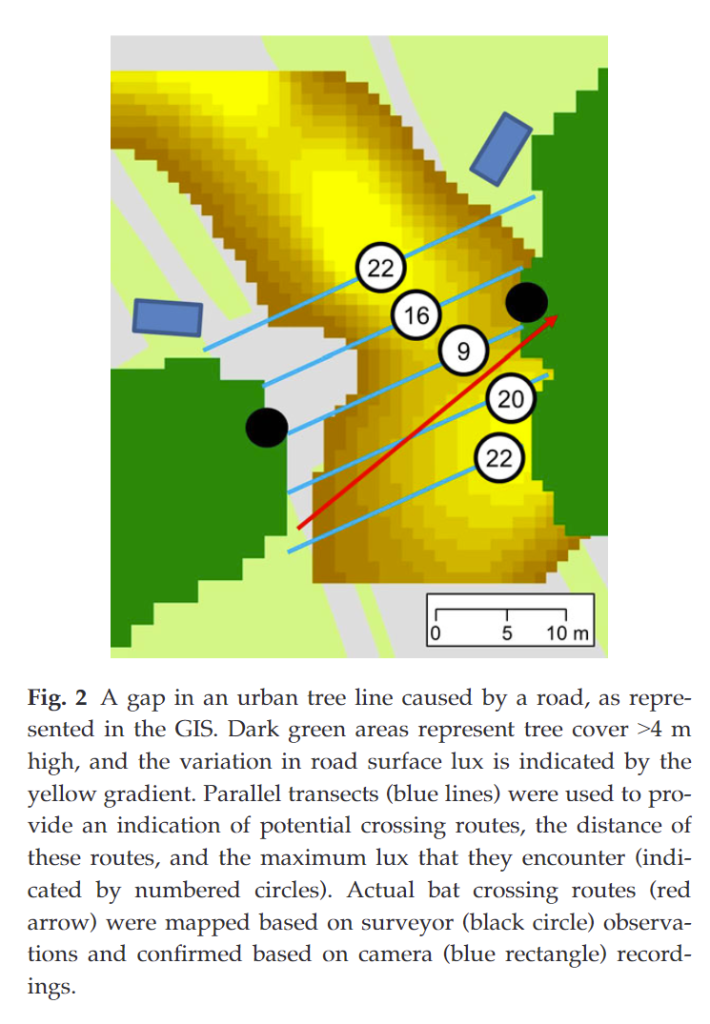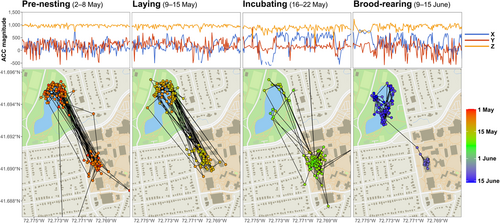Coyotes and White-Tailed Deer are two of the most “conspicuous” wildlife species in urban areas. They have constantly been in a predator-prey relationship since their ranges overlapped. Coyotes typically predate on fawns and scavenge on carrion from adults. This study hypothesized that “both deer and coyote detections will increase with distance to urban center; and decrease with housing density, road density, and human visitation” (Magle et. al, 2014). The researchers had a suspicion that human disturbance will cause more impact to the coyotes directly. The white-tail deer require quality vegetation and have to be selective on habitat traits to survive. Coyotes can have ranges that lack all green space as long as there is adequate food supply being other animals. They also hypothesized that “coyote and deer detections will increase with proximity to water, habitat-patch area, and canopy cover” (Magle et. al, 2014).
Methods
Using camera traps, the researchers followed three, 50km transects going away from Chicago’s urban center. These transects cover many forms of civilization being urban, suburban, exurban, and forest. Each transect contained 10, 5km sections that contained at least 2 stations, but not more than 4 in locations that contained potential habitat. 4 times a year a camera was deployed at each station for 30 days. They applied coyote attracting lures to each location. Using GIS, they quantified landscape attributes that can be used to understand the animals’ presence around human disturbances.
Results
1055/4679 photos were of deer and coyotes. 93 cameras total were operating during majority of the study. 22/93 of the cameras were never triggered by deer or coyotes. Deer were positively correlated to canopy cover and negatively correlated to distance to water source. Seasonal colonization of deer were negatively affected by housing density, patch area, and photos of humans and dogs on cameras. Coyotes detection had a positive correlation to season and canopy cover and distance from urban center. Coyotes displayed a negative affect when humans and dogs were reported on cameras. The presence of deer had no affect on the coyotes as to favor or not favoring their appearance. Deer did have a correlation with coyote appearance and was negatively affected if a coyote had been around recently. Urban center distance to locations where animals were reported on camera had no significant relationship. Deer were most active around dawn and dusk but coyotes were more active around midnight and miday. Hypothesis were supported by their research that both species would select patches on basic requirements. Deer appeared to show a pattern that in a habitat limited area, such as urban landscapes, they do not perceive threats as cautiously as they would in a rural environment. They are more willing to take risk to forage in urban landscapes where predators have been than they would in rural areas.
1. S. B. Magle, L. S. Simoni, E. W. Lehrer, J. S. Brown, Urban predator–prey association: Coyote and deer distributions in the Chicago Metropolitan Area. Urban Ecosystems. 17, 875–891 (2014).






